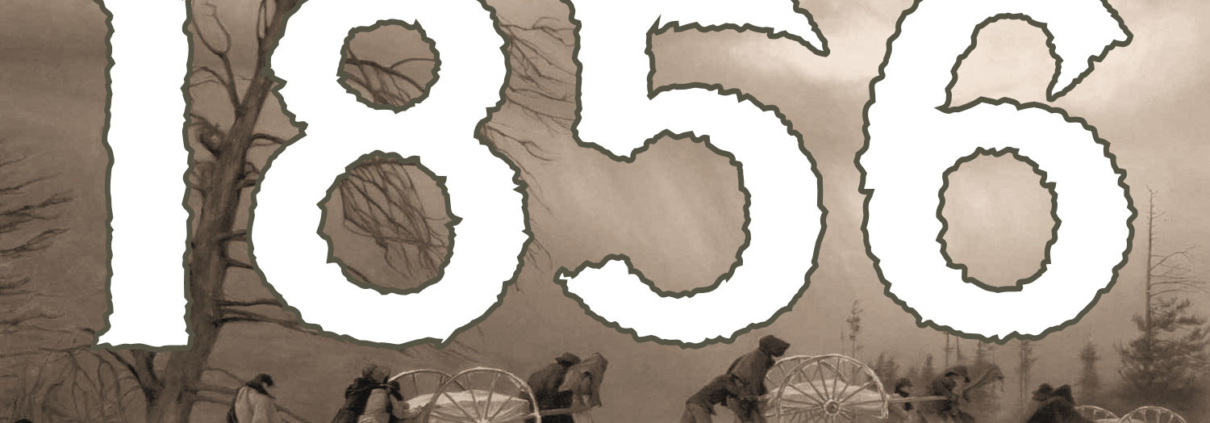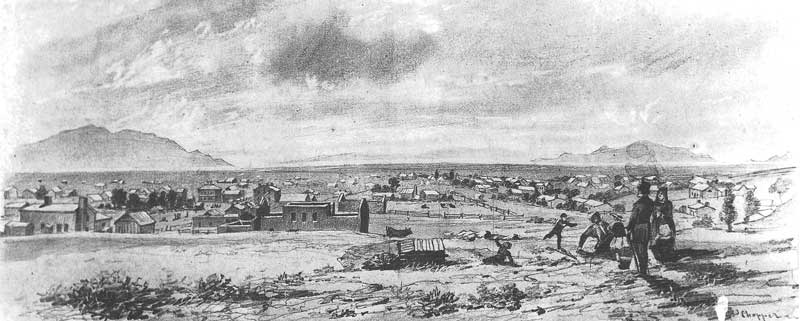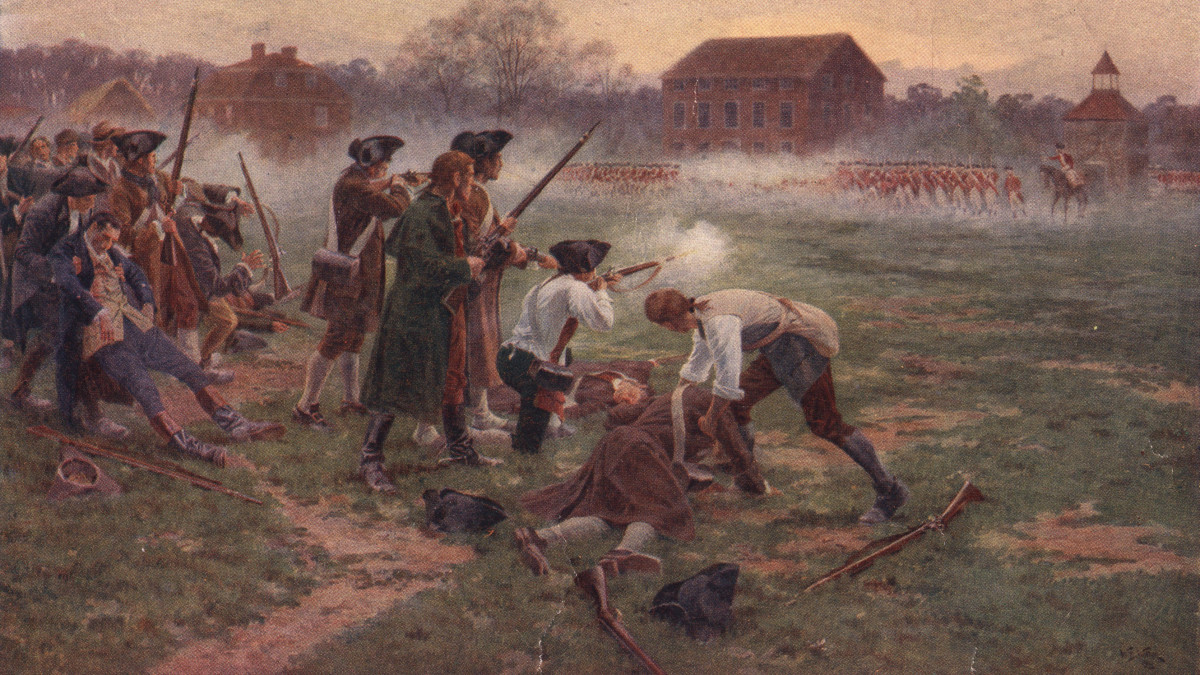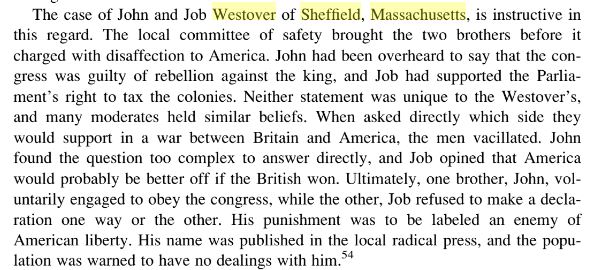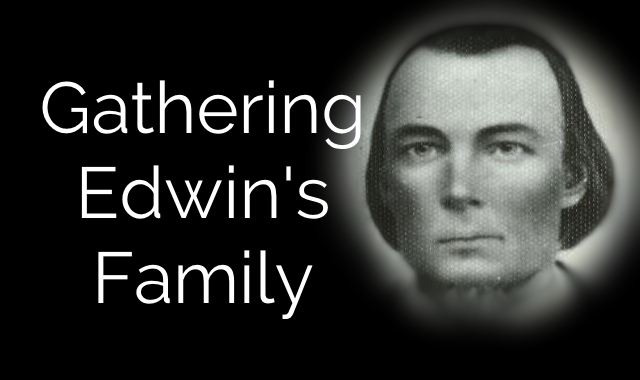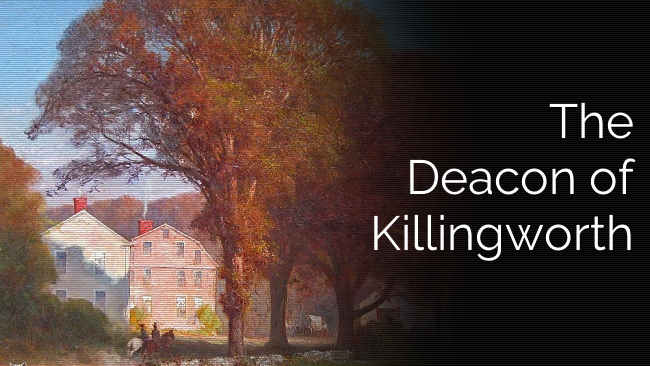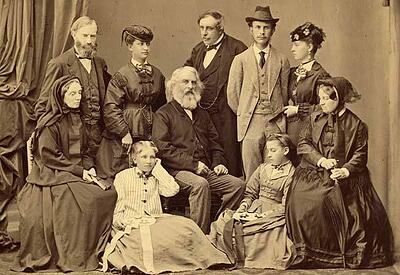Westovers of the American Revolution
We received an email requesting more information about the John Westover family of Sheffield, Massachusetts of the mid-18th century.
The inquiry was specifically about which of the many sons of John and Rachel Westover were loyalists and which were colonialists.
It is an interesting question simply because it was the American Revolution that really started the spread the Westover family across North America.
The answer to that question is quite complicated, however.
Living in those times in New England tried the loyalties of nearly everyone. It was a dangerous time.
The key fact to bear in mind lies with the patriarch of the family, John Westover. He was the clerk of the Church of England in Sheffield. The Church was headed by the King of England. His loyalty had to be to King and country.
But by the mid-1770s his sons were grown men.
The sons of John and Rachel Westover were, in order of age: John Jr., Job, Moses, William, Noah and Amos.
Many of these sons served in the colonial side during the American Revolution and are identified in historical records as patriots:
John Jr — 3rd Co., First Regt. of Berkshire Co. Militia, 11 Jul 1776
Job — 3rd Co., First Regt. of Berkshire Co. Militia, 11 Jul 1776
Moses — In the 3rd Co., 1st Regt., Berkshire Co. Militia, 11 Jul 1776. He was a private in Capt. Enoch Noble’s Co., Col. John Ashley’s Regt., Berkshire Co. Moses entered service on 1 Aug 1777 and was discharged 20 Aug 1777. The Company marched to Bennington, Vermont by order of Brig. Gen. Fellows and the Committee of Saftey at the request of Gen. Stark.
Noah — 3rd Co., First Regt. of Berkshire Co. Militia, 11 Jul 1776.
However, despite their service record, each are mentioned in various histories as loyalists to the British Crown.
For the video titled Brothers we referenced several books, including an 1847 publication by Lorenzo Sabine titled The American Loyalist: Or, Biographical Sketches of Adherents to the British Crown in the War of the Revolution. Below is a snip of all that is written of Job Westover:
Another volume, this one titled American Archives: Consisting of a Collection of Authentick Records, State Papers, Debates, and Letters and Other Notices of Publick Affairs, the Whole Forming a Documentary History of the Origin and Progress of the North American Colonies; of the Causes and Accomplishment of the American Revolution; and of the Constitution of Government for the United States, to the Final Ratification Thereof (They had insanely long titles in those days), written in 1839, the actual notes of the committee action noted action against three of the Westover family: John, Job and Noah.
That record agrees with the other accounts listed here but it does not give any mention of the activity or disposition of action against Noah Westover.
Another book, A History of War Resistance in America by James M. Volo, gives us a little more information:
Moses Westover’s history is a little more well known. What we learn of Moses comes from histories written in and about southern Canada, where many New England loyalists fled to after the Revolution.
From a book titled Contributions to the History of Eastern Townships: A Work Containing an Account of the Early Settlement of St. Armand, Dunham, Sutton, Brome, Potton, and Bolton, with a History of the Principal Events that Have Transpired in Each of These Townships Up to the Present Time, published in 1866 by Cyrus Thomas, we learn:
Moses Westover, in 1796, settled in North Sutton, about three miles east of the place where the settlers named above took up their residence. A part of the lot on which he pitched is now owned by Roswell and Stephen Westover, his grandsons. Mr. Westover was a loyalist. He lived in Sheffield, Massachusetts, at the opening of the revolution, but finding his life in jeopardy in that place, he fled and came to Canada. Previous to coming to Sutton he lived at Caldwell’s Manor. He was granted two lots of land by the British Government on account of his loyal principles; one was located in Stanbridge; the other was the one on which he settled in Sutton.
This nice bit of history is significant because it was from Moses that the Canadian branch of the Westover family was born. He had a large family and was quite prominent in that area.
Moses’ brothers would also have large families. His brother John Jr moved to Canada near Moses.
Job, the one identified as the enemy to liberty in Sheffield, actually stayed there after the war and raised his family. Some of his children would leave Sheffield to raise large branches of the family elsewhere. It was his son, Job Jr, who left for Missouri and founded the family branch there. His son, Luther, had 10 children of his own including William Westover, who would later in life become a founding father of some fame in Bay City, Michigan.
William Morton Westover, another son of John and Rachel, born in 1746, does not have much of a historical record. We do not know how long he lived, if married or if he lived long enough to see the American Revolution like his brothers.
Noah Westover would stay in New England, marrying around the time of his military service. He and his wife raised 5 children – 1 son and 4 daughters. This family would spread further into New England and the American Midwest.
Amos Westover – father to Alexander and grandfather to our Edwin Ruthven Westover – never served in the war. He did follow his brothers into Canada for a time but migrated back to the United States through Vermont, eventually making his way to Ohio. All of his children moved west with the Mormon migration in 1848.
The children of John and Rachel Westover included 4 daughters, too: Rachel, Abigail, Joanna and Rhoda.
The two oldest girls either died in infancy or as small children. Joanna married in 1763 to Moses Ashley Eggleston and they had two children. Daughter Rhoda lived a very long life of 96 years, bringing five grandchildren to the Westover family, who settled between New York and Vermont.
In all, John and Rachel Westover had 10 children and 47 known grandchildren. Their youngest grandchild was John Race, who was born to Rhoda in 1810 and died in 1895.
These three generations – John and Rachel, their children and their grandchildren – covered roughly 190 years on this earth. But more impressive is the distance and the number of places where they settled all over North America. From Massachusetts to southern Canada, westward to Michigan, Wisconsin, Ohio and then to Utah, Idaho, Arizona and California, and also all over New England – we are trying to map it all.
But most interesting and central to it all is the American Revolution. That was the trigger event and it was a big one.
Other events would further spread out the family. We will get to those in time. But in my view there is still a lot of work to do to document the many histories of each of these individuals, starting with the children of John and Rachel. We have a start in that we know when they lived, who they married and the children they had.
But we don’t know much of their individual stories. I believe each of these stories are compelling – if we can learn them.
If you are a descendent of the children of John and Rachel Westover, we’d love to hear from you. With grandchildren of theirs living nearly until the 20th century the possibility exists that there may be photos. Perhaps written diaries survived. Maybe something out there exists that can tell us more of their story.
We hope you might share.
Gathering Edwin’s Family
Earlier this year I was contacted by an individual working on a project related to the 150th anniversary of the Golden Spike associated with the completion of the Transcontinental Railroad. Her goal was to share the history of residents local to Cache Valley who worked the railroad after it was completed. One such individual was John Henry Westover, son of Ann Findley and Edwin R. Westover, and a brother to my grandfather William.
I was very familiar with John Henry. He’s one of my family history dead ends. This man is buried here locally and I was able to find a very, very brief obituary for him. And I even have a photo of him from his youth where he played in the band in Mendon, Utah. But that is where my knowledge of him ends. This great uncle is largely a mystery to me.
He came to my mind almost immediately this summer while in discussion with two men who have grown dear to me – Don Westover and Jason Walker. Like John Henry, Jason, Don and myself are all descendents of Edwin Ruthvin Westover.
We were at the Westover Family Reunion in Rexburg and engaged in conversation about Edwin. Together we openly mused about the possibility of holding a Edwin R. Westover family reunion.
Since that time I have been beset with these thoughts almost constantly. I know enough not to ignore such promptings. The idea is not really about a family reunion so much as it is a gathering Edwin’s family.
What’s the difference between a reunion and a gathering? Bear with me as I explain.
We know who Edwin’s ancestors are. There are many who have contributed to that effort over the generations. But a “gathering” of Edwin’s descendents has never been done.
As Jason, Don and I discussed this we agreed it was high time we bring the families of Edwin Westover together. Before we can do that we must gather them.
Edwin can rightfully be called the patriarch of the modern Westover family. He was the first male member of the family to join the Church and his pioneer story, and life of trial and tragedy, were a beginning to an incredible family legacy. While we can account (and have done so) for his life we cannot fully account of his family.
Edwin’s family was central to his life’s purpose. It drove him. He was promised in a blessing that his descendents would do the work of his family history and be present with him at a feast with the Savior.
Edwin was married three times in his lifetime. His first wife died shortly after the birth of his first child. He remarried on his way west to Sarah Jane Burwell and over the course of their life together they had 13 children. He took Ann Findley as a plural wife in 1856 and had five more children.
Altogether that’s 19 children. What happened to his children and how many grandchildren and great-grandchildren does Edwin have? What are their stories?
That is the gathering we want to do. We want to develop Edwin’s tree backward and forward. We do not want anyone to be unaccounted for.
So we have set a goal. We would like to hold an Edwin R. Westover family reunion in about five years — around the 27th of August in the year 2024 — Edwin’s 200th birthday. Between now and that time it will be our work to simply find and account for all of Edwin’s descendents.
I propose a yearly meeting, if possible, built around Roots Tech in Salt Lake City each winter. There may not be many of Edwin’s descendents who actually attend Roots Tech but the technology exists for us to connect online. That time of the year is an excellent time to gather those we can find to share and update information. If successful, we can arrange for a physical gathering for Edwin’s 200th when the time comes.
We will use this space to build the record of Edwin’s family. How we will do this and what information we will actually require will be discussed later.
What I believe is most important is that we attempt to do this. We, as his children, do owe it to him to make a family record with every name of every child born since Edwin lived. We are his family.
And this is a work of love that was dear to Edwin.
In his final blessing, it reads: “…Thy power in the priesthood shall enable thee to do all the good that is in thy heart, even to accomplish and fulfill all the blessings that have been sealed upon thee pertaining to the new and everlasting covenant, or at least to lay the plan in which thy children shall labor to redeem they father’s house that not one be lost…”
“Not one be lost”, I believe is a worthy theme of this effort. Let’s find the families of Edwin R. Westover. Let’s put it together and share with every one of them. That is the goal.
The Deacon of Killingworth
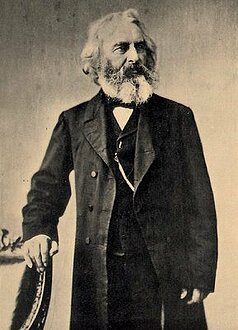 Last year I shared with you a family history connection we have with Henry Wadsworth Longfellow – great American poet and truly one of the “rock stars” of the 19th century.
Last year I shared with you a family history connection we have with Henry Wadsworth Longfellow – great American poet and truly one of the “rock stars” of the 19th century.
We share with Longfellow the common ancestors of John and Priscilla Alden.
Another common ancestor we share is “The Deacon”, as Longfellow referred to him in his famous poem, The Birds of Killingworth.
Cousin Henry Wadsworth Longfellow is famous for a lot of things.
He was very educated. He spoke ten languages and studied dozens more. He was not only a poet but also a famous educator, teaching for a time at Harvard.
His published works not only showcased his knowledge of history and literature but they reflected well his sensitive nature about things as personal as love and family.
As an artist, both then and now, he has had to endure the barbs of critics who felt his works were frequently too romanticized and filled with fantasy.
I’m no critic. I’m also no expert on the high-minded world of poetry. I cannot write it, much less understand it well when I read it.
But in studying the life of Longfellow I do know this: he knew his family history, whether talking about John Alden or The Deacon.
The Birds of Killingworth is a poem set in the very real village of Killingworth, Connecticut – a very important place in early American Westover family history.
It was, for a time, home to Jonah Westover, the first Westover in the New World.
In the poem the story is told of a town meeting held in Killingworth where the farmers implore town leaders to do something about the birds that were feasting on the farmers’ crops.
Even as the songs of those same birds wafted through the windows of the old church where the meeting was held the argument was made to kill the birds.
The town elders were riled up. The Squire, the Parson, and the Deacon were there, which gave weight to the proceedings.
Of the Deacon, Longfellow described him like this:
And next the Deacon issued from his door,
In his voluminous neck-cloth, white as snow;
A suit of sable bombazine he wore;
His form was ponderous, and his step was slow;
There never was so wise a man before;
He seemed the incarnate “Well, I told you so!”
And to perpetuate his great renown
There was a street named after him in town.
Arguments were made in the debate from every side but for the birds, well, “Hardly a friend in all that crowd they found”.
The town voted to kill the birds and as the poet tells the story they came to regret it. Without the birds the worms took over the crops and the insects devoured most of the grain and the leaves on the trees, leaving the fruit to be scorched by the sun.
The farmers and the town indeed learned the lesson of that balance to nature that the birds provided.
Many interpretations of this famous poem do not recognize Killingworth as a real place.
But Longfellow did.
Killingworth was a stopping point for Longfellow in his travels when he wrote The Birds of Killingworth in 1863. Why was Henry Wadsworth Longfellow in Killingworth, Connecticut?
Because he knew it as an ancestral homeland.
If Longfellow knew anything, it was his family history.
His father was a lawyer and his maternal grandfather was a general in the American revolution as well as a member of Congress. Longfellow knew he was descended of at least four Mayflower Pilgrims.
When he was 15 he attended Bowdoin College in Brunswick, Maine – a college founded by his grandfather and his father was a trustee of the institution.
Longfellow was taught his family history and used his knowledge of his ancestors in many of his most famous works. They inspired him – even the Deacon.
The Deacon was Edward Griswold, town father of Killingworth, Connecticut and father to Hannah Griswold Westover, wife of Jonah Westover, the first male Westover in America.
Griswold was born in 1607 in Kenilworth, England, from which the name Killingworth is derived. He was born in a family rich in English history and famous for providing greyhounds for the King. He was educated and his family was connected.
Edward Griswold married in 1629 and with his wife Margaret had about five children before immigrating to the New World in 1639.
Edward brought with him younger brothers Michael, Francis and Matthew, all who would make historic contributions to the history of Connecticut and Massachusetts.
Edward quickly became prominent in the affairs of Windsor, Connecticut. He served as Deputy to the General Court from Windsor and was also Justice of the Peace of Windsor prior to 1663.
He was granted land from the King in Poquonoc (now Groton), about 4 miles west of Windsor, in 1642, but he didn’t move there until after the Indians were gone from the area. When it was safe, they settled the area with the families of John Bartlett and Thomas Holcomb in 1649.
His brothers Francis and George came to settle there soon after. His homestead consisted of 29.5 acres, bounded at the east by the Poquonoc River, the south and west-northwest by Stony Brook.
The house stood on the hill just to the north of the main road. Because of the potential dangers of the wilderness, the families were relieved of military duty so long as there was always a man available to stand as sentinel.
In 1663 Griswold was appointed to a committee charged with developing a new area near a place called Saybrook.
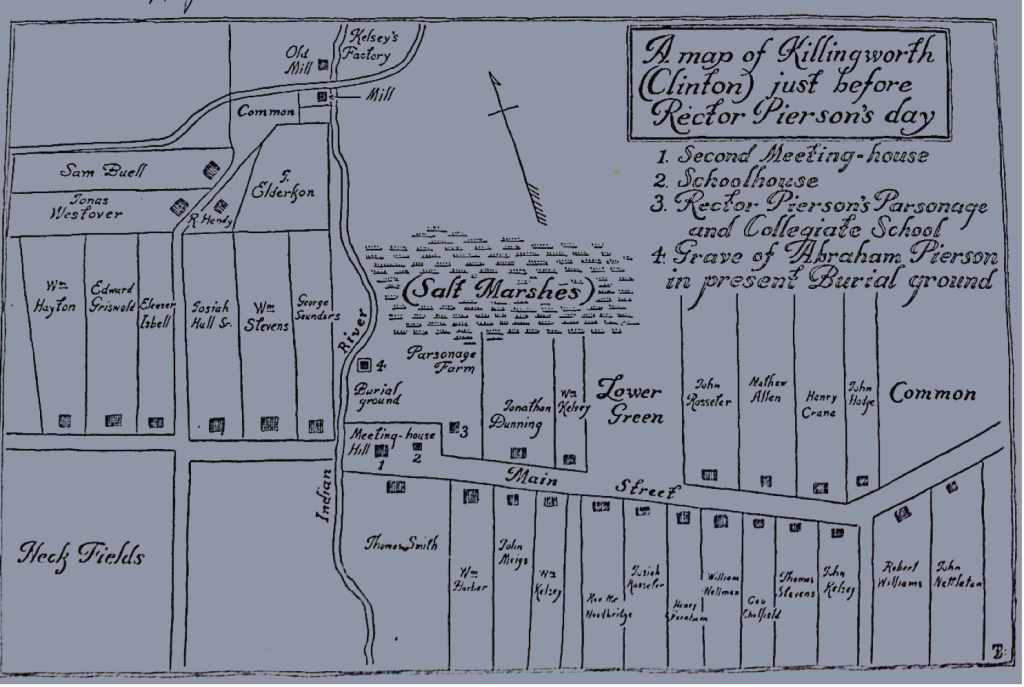 It took some time but within a few years Griswold had moved his family there, including new son-in-law Jonah Westover and his family. He helped to charter the foundation of a Church there and was named Deacon. In 1667 he was named deputy of Killingworth, a position he held nearly up to the time of his death.
It took some time but within a few years Griswold had moved his family there, including new son-in-law Jonah Westover and his family. He helped to charter the foundation of a Church there and was named Deacon. In 1667 he was named deputy of Killingworth, a position he held nearly up to the time of his death.
Over the course of his years there Griswold was influential in nearly every major civic action, collecting properties and settling claims with other area pioneers.
Edward and Margaret had at least a dozen children. As such, Edward sits as head of a very large family tree, with some 20 million plus people in his downline. As a prominent individual with fairly well documented history there literally thousands who have been working on his history.
I also believe, given his ties to the Puritan movement, that Edward Griswold had a very large influence upon the children of others.
I cannot prove it but I strongly suspect his ties to Jonah Westover pre-date the marriage of his daughter Hannah to Jonah. The year of their immigration and the year of Jonah’s ascension as a married man, a Freeman, and a property owner coincide very closely with the movements of Edward Griswold.
I believe Edward Griswold was as much a step-father and mentor to Jonah Westover as father-in-law. Their lives were that closely aligned. In both Simsbury and in Killingworth the Westovers were also neighbors to the Griswolds.
I don’t think Longfellow was plagued much by imagination in his poetry. I believe he educated himself on history of both places and individuals.
In fact, The Birds of Killingworth stirred the suspicions of experts long after Longfellow’s death. What was his inspiration?, they wondered.
“The Birds of Killingworth” is the only episode in Tales of a Wayside Inn that Longfellow had not adapted from an older textual source.
For many years readers suggested that Longfellow might have likewise based this tale, describing the massacre of pestilent birds by the citizens of the town in Connecticut, on some forgotten legend or historical incident.
Shortly after Longfellow’s death a literary sleuth wondered whether the tale originated on the other side of the Atlantic, since Killingworth got its name from Kenilworth, in England. One person even went to great lengths to write the town clerk in Kenilworth, England to see if ever there was a town vote about killing birds. None was found.
Nobody in the 19th century seemed to make the connection of Longfellow to Killingworth, though they never stopped trying.
In 1890 a publication called American Notes and Queries published a letter from Longfellow’s brother Samuel, who claimed that he found a newspaper clipping reporting a debate in the Connecticut legislature upon a bill offering a bounty upon the heads of birds believed to be injurious to the state’s farmers. It was from this not-so-famous debate that it was concluded that Longfellow had to have used it as his inspiration for the famous poem.
We know now that had little to do with it. Killingworth was a personal connection for Longfellow. While the story of the birds has no known basis in historical fact the characters within the poem were strikingly real when compared to what is known about Killingworth history — and Longfellow history (and, by extention, our history).
On Longfellow’s 100th birthday in 1907 journalist William E. A. Axon reported in The Nation that, a year before Longfellow died, he had written to him, asking “whether this narrative had any basis of fact or was merely the fantasy of a poetic brain”— and the great poet himself had replied:
The poem is founded on fact. Killingworth is a farming town, on Long Island Sound…of course, the details of the poem are my own invention, but it has substantial foundation of fact.
That fact was family.
